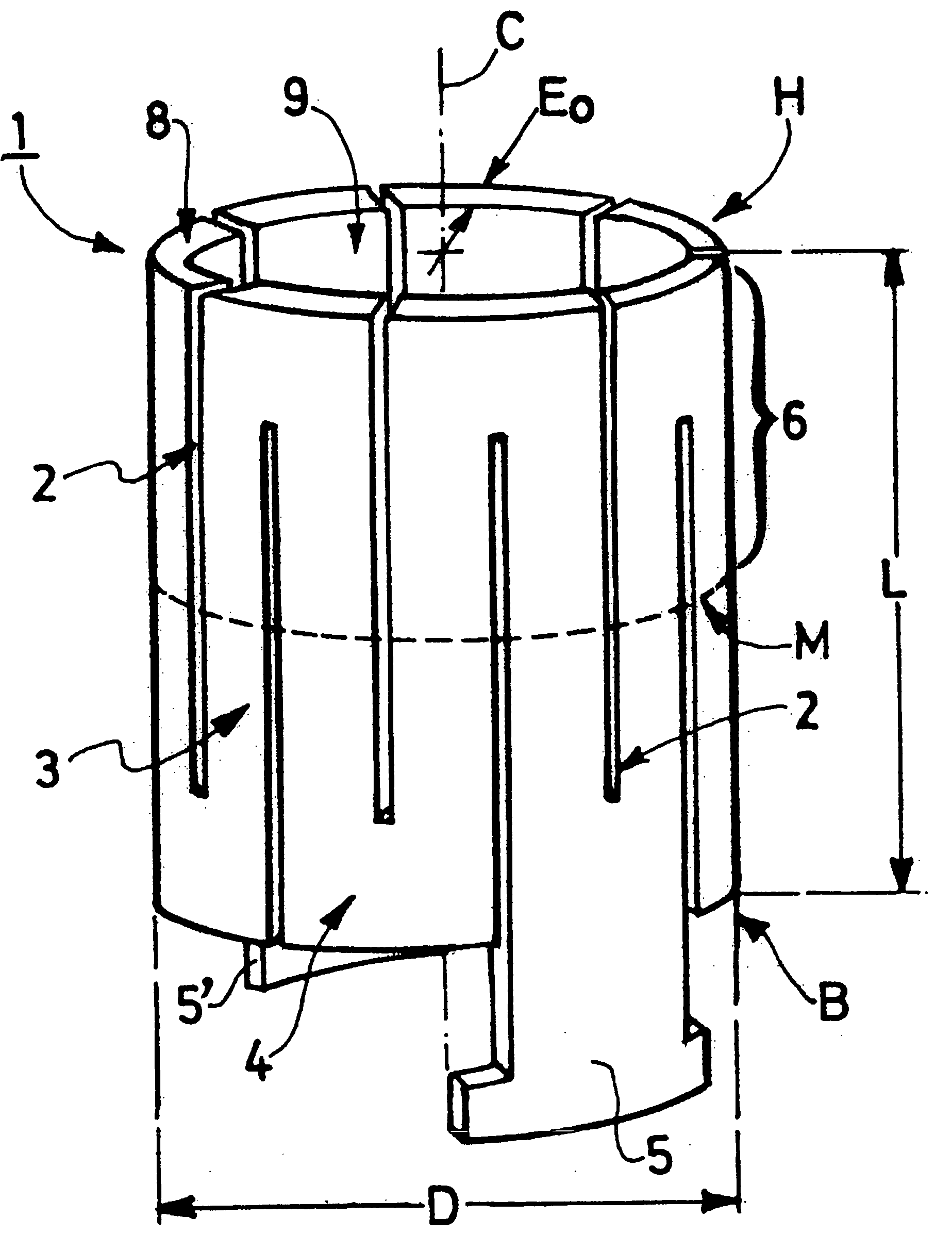Resistor made from carbonaceous material
a carbonaceous material and resistor technology, applied in the field of electric resistance, can solve the problems of accelerating the degradation and wear of resistors, creating undesired thermal gradients, and potentially high reactive hot spots with the atmospher
- Summary
- Abstract
- Description
- Claims
- Application Information
AI Technical Summary
Problems solved by technology
Method used
Image
Examples
Embodiment Construction
[0011] The invention provides a crenellated resistor, i.e. a resistance with a hollow cylindrical shape and a meander like design, made from a carbonaceous material, and characterized in that the wall thickness varies in the extremities of the meanders—where the electrical lines are curved—in order to produce an even temperature on the surface of the resistor when in use.
[0012] The inventor worked on the hypothesis that the temperature gradients were due to a high concentration of the electrical flow lines—and therefore to an increase in the power dissipated per unit of surface area—in the part of the meander where the radius of the curve is the shortest. In this way, he tried to increase the electrical resistance in this area in order to distribute more evenly these electrical flow lines.
[0013] The inventor figured out that a modification of the wall thickness of the resistor determined so as to modify the electric current density. This modification was mode essentially in the ex...
PUM
| Property | Measurement | Unit |
|---|---|---|
| temperature | aaaaa | aaaaa |
| resistivities | aaaaa | aaaaa |
| temperatures | aaaaa | aaaaa |
Abstract
Description
Claims
Application Information
 Login to View More
Login to View More - R&D
- Intellectual Property
- Life Sciences
- Materials
- Tech Scout
- Unparalleled Data Quality
- Higher Quality Content
- 60% Fewer Hallucinations
Browse by: Latest US Patents, China's latest patents, Technical Efficacy Thesaurus, Application Domain, Technology Topic, Popular Technical Reports.
© 2025 PatSnap. All rights reserved.Legal|Privacy policy|Modern Slavery Act Transparency Statement|Sitemap|About US| Contact US: help@patsnap.com



